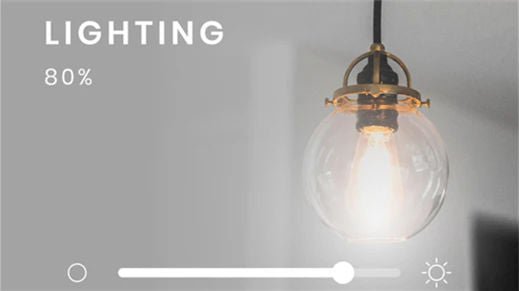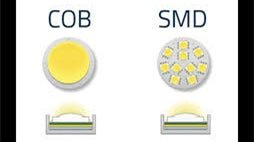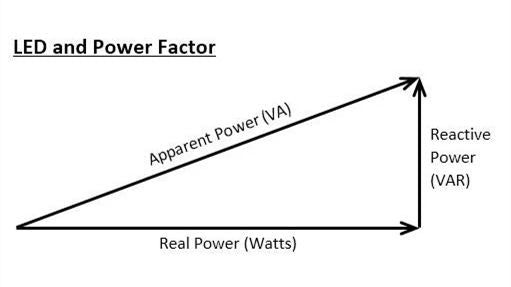In the quest for energy efficiency and cost-effectiveness in lighting, LED technology has emerged as a frontrunner. Among the various factors influencing the performance and efficiency of LED lights, the power factor is a critical yet often misunderstood element. This article aims to shed light on the power factor in LED lighting, exploring what it is, why it matters, and whether a higher power factor is always better.
Understanding Power Factor
The power factor (PF) of an electrical device is a measure of how effectively it uses electricity. It is defined as the ratio of real power (measured in watts, W) used to perform work, to apparent power (measured in volt-amperes, VA) supplied to the circuit. Mathematically, it is expressed as:
The power factor can range from 0 to 1, where 1 indicates perfect efficiency, meaning all the supplied power is being used effectively, and 0 indicates no effective power use.
Types of Power Factor
- Leading Power Factor: Occurs when the current leads the voltage, typical in circuits with capacitive loads.
- Lagging Power Factor: Occurs when the current lags behind the voltage, common in circuits with inductive loads.
- Unity Power Factor: A power factor of 1, indicating that voltage and current are in phase and the device uses power most efficiently.
Why Power Factor Matters in LED Lighting
Energy Efficiency
A higher power factor indicates that a greater proportion of the electrical power is being converted into useful work, such as light output in the case of LEDs. This means that less power is wasted, enhancing the overall energy efficiency of the lighting system.
Cost Savings
Utilities often charge industrial and commercial users based on their power factor. A lower power factor can result in higher electricity bills due to inefficiencies and additional charges for reactive power. Improving the power factor can thus lead to significant cost savings on energy bills.
Reduced Strain on Electrical Infrastructure
A higher power factor reduces the amount of reactive power in the system, which in turn reduces the strain on electrical components and infrastructure. This can prolong the life of transformers, wiring, and other electrical equipment, leading to lower maintenance and replacement costs.
Environmental Impact
By improving the power factor, less energy is wasted, which can contribute to reduced greenhouse gas emissions and a smaller carbon footprint. This aligns with global efforts to enhance energy sustainability and combat climate change.

The Ideal Power Factor for LED Lights
While a power factor close to 1 is often considered ideal, the practical target for LED lights typically ranges between 0.9 and 1.0. Most modern LED drivers aim for a power factor of at least 0.9 to meet regulatory standards and efficiency goals.
Pros of a High Power Factor in LED Lighting
Enhanced Efficiency
As mentioned earlier, a high power factor means that the LED light is using power more efficiently. This translates to lower energy consumption for the same amount of light output, which is a crucial advantage in both residential and commercial settings.
Lower Operational Costs
Higher power factor LEDs help in reducing the overall electricity consumption, thereby lowering operational costs. This is particularly beneficial in large-scale installations such as office buildings, factories, and street lighting, where energy savings can be substantial.
Improved Electrical Network Performance
High power factor devices contribute to a more stable and efficient electrical network. By minimizing reactive power, they reduce the load on the electrical infrastructure, which can lead to improved performance and reliability of the power supply.
Compliance with Regulations
Many regions have regulations and standards that require lighting systems to meet specific power factor thresholds. Using high power factor LED lights ensures compliance with these standards, avoiding potential fines and ensuring eligibility for energy rebates and incentives.
Cons of Pursuing a Very High Power Factor
Increased Cost
Achieving a very high power factor often requires more sophisticated and expensive LED drivers and circuitry. This can increase the initial cost of the lighting system. While the operational savings can offset this over time, the higher upfront investment may be a barrier for some users.
Diminishing Returns
As the power factor approaches 1, the incremental benefits of further improvements diminish. The additional cost and complexity required to achieve marginal gains in power factor may not always justify the investment, particularly in small-scale or cost-sensitive applications.
Potential for Harmonic Distortion
In some cases, efforts to improve the power factor can lead to increased harmonic distortion in the electrical system. Harmonic distortion can interfere with other electronic devices and reduce the overall quality of the power supply. It’s essential to balance power factor correction with harmonic management.

Practical Considerations for Optimizing Power Factor in LED Lighting
Choosing the Right LED Drivers
Selecting high-quality LED drivers with built-in power factor correction can significantly improve the power factor of the lighting system. It’s important to look for drivers that offer a power factor of at least 0.9 and are designed to minimize harmonic distortion.
Implementing Power Factor Correction Devices
In larger installations, using external power factor correction devices such as capacitors and inductors can help optimize the power factor of the entire system. These devices compensate for the reactive power and bring the power factor closer to unity.
Regular Monitoring and Maintenance
Regular monitoring of the power factor and maintaining the LED lighting system can ensure sustained efficiency. Any deviations from the optimal power factor can be promptly addressed to prevent energy losses and additional costs.
Conclusion
In conclusion, the power factor is a crucial metric in evaluating the efficiency and performance of LED lighting systems. A higher power factor generally indicates better energy utilization, lower operational costs, and reduced environmental impact. However, it’s essential to balance the pursuit of a high power factor with practical considerations such as cost, diminishing returns, and potential harmonic distortion.


































Leave a comment
This site is protected by hCaptcha and the hCaptcha Privacy Policy and Terms of Service apply.